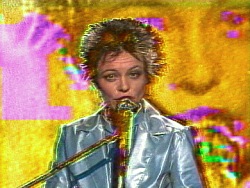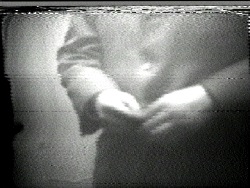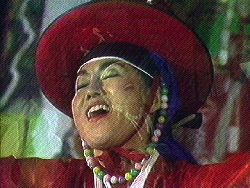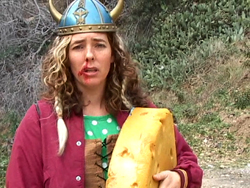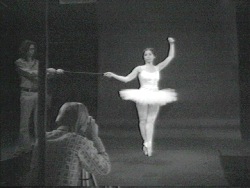Search Results
Search Results
Title Results
Your search returned 789 Titles
"Bumper was filmed at the time of our first pregnancy in late 2001/early 2002. At the time we were also making small objects from melted plastic beads in our kitchen. In Bumper we use these objects as accessories and low-tech special effects. The video shows our early interest in futuristic images of the human body’s intertwined relationship with natural and technological systems alongside craft and crude DIY aesthetics. Unintended at the time, but recently discovered and newly appreciated, is the audio track, capturing the domestic atmosphere of the time, including background radio and a brief conversation on a telephone." — LoVid
The golden, barren landscape of Death Valley, recorded by Cho from a moving car, provides the luminous and mysterious texture of Buoy. Cho reflects on the polar extremes of this desert, once the floor of a vast sea and now traversed by tourists. In contrast to the horizontal landscape, which floats ceaselessly past Cho's camera, vertical "strata" pattern the imagery, creating an axis between natural landscape and Cho's composition.
The exuberant irreverence and wit of Butterfly characterizes Paik's stream-of-consciousness visual and conceptual techniques. In a vibrant image/music collage, he ironically juxtaposes high-cultural artifacts (the aria from Madame Butterfly), contemporary avant-garde icons (Laurie Anderson) and...
Button Happening is Nam June Paik's earliest extant videotape, and possibly his first tape ever. Recorded in 1965 on the day he acquired his first Sony Portapak camera, this previously unknown work has recently been rediscovered and restored. Recorded on computer tape, this technically fragile...
This ambitious live satellite link-up of Japan, Korea and the United States features interviews with Keith Haring and architect Arata Isozaki, and performances and works by Philip Glass and the Kodo Drummers, Charlotte Moorman, Nam June Paik, and Lou Reed. In an extraordinary section, a...
This video documents Cake Walk, an installation and performance piece by artist Houston Conwill, staged in November 1983 at Linda Goode Bryant's pioneering gallery Just Above Midtown (JAM), at its second (downtown) location on Franklin Street. The piece refers to the cakewalk dance which...
Roberta Smith writes in The New York Times, "Ms. Kahn is seen with a bloodied nose, a viking helmet and a large wedge of rubber Swiss cheese, rambling around Los Angeles, talking to the camera, Ms. Dodge and us. The one-sided conversation turns variously competitive ('You should have been there...
Carl Ruggles Christmas Breakfast 1963
Carolee Schneemann
2007, 9:02 min, color, sound, 16 mm film on video
In her earliest film, which has been newly transferred to video, Schneemann presents an abstracted portrait of the American composer Carl Ruggles, known for his irascible personality and finely-crafted atonal music. Ruggles is seen enjoying pie a la mode and ruminating on subjects ranging from Christmas to his incomplete opera The Sunken Bell. The hand-painted film stock heightens the impressionistic vitality of this snapshot of the 84-year-old composer.
A photographic session in which the artist as "ballerina" is photographed by the "photographer" in a set of stills intended to represent her in the appropriately glamorous and correct positions, after only three months of ballet training. The tape juxtaposes the truth of the "still" image, adequate for 1/125 of a second, against the video camera's more extensive duration. The cropped reality photographed is compared to the "truth" of the video camera.


